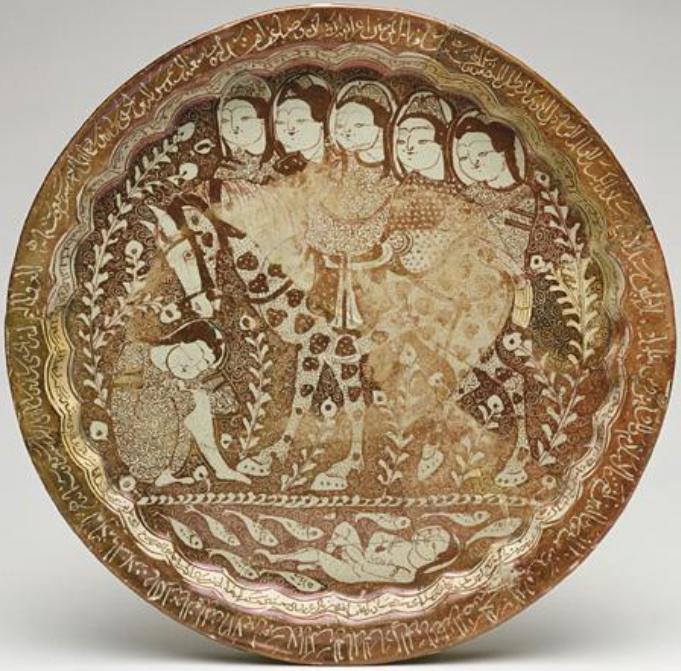
Try Amazon Audible Premium Plus and Get Up to Two Free Audiobooks
Saljuq Mystic Plate, 1210AD. Freer Gallery of Art, Washington DC, F1941.11.

A larger image of this Saljuq Mystic Plate, 1210AD. Freer Gallery of Art, Washington DC, F1941.11.


Plate
MAKER: Artist: Shamsuddin al-Hasani Abu Zayd
HISTORICAL PERIOD: Saljuq period, December 1210 (Jumadi II 607 A.H.)
MEDIUM: Stone-paste painted over glaze with luster
STYLE: Lustre ware
DIMENSIONS: H x W x D: 3.7 x 35.2 x 35.2 cm (1 7/16 x 13 7/8 x 13 7/8 in)
GEOGRAPHY: Iran, Kashan
CREDIT LINE: Purchase — Charles Lang Freer Endowment
ACCESSION NUMBER: F1941.11
PREVIOUS OWNER: Hagop Kevorkian 1872 - 1962
LABEL: The composition on this plate, one of the most complex on any known Persian lusterware, has been read as a mystical allegory regarding the quest for the Divine. According to this interpretation, the sleeping youth represents the mystic who yearns to transcend the material world, symbolized by the horse. The youth's goal is to attain a vision of divine beauty (i.e., union with God), signifed here by the naked woman floating in the fishpond. It is the only known extant plate with such an unusual and spiritually inspired iconography. One of the inscriptions records that the plate was made by Shamsuddin al-Hasani Abu Zayd, an accomplished potter of the early thirteenth century.
Source: Freer Gallery of Art
Reference: G. D. Guest and R. Ettinghausen, "The Iconography of a Kāshān Luster Plate," Ars Orientalis 4, 1961, pp. 25-64.